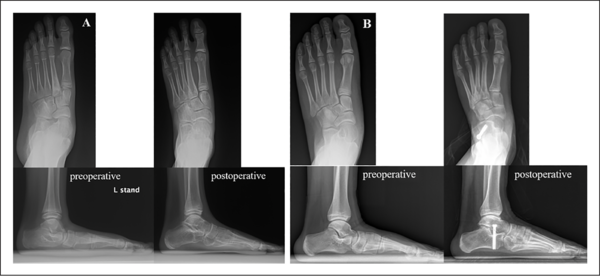Children with flatfoot who undergo a screw-based procedure recover in half the time compared to those treated with a more traditional bone-cutting surgery, according to new data out of Seoul National University Bundang Hospital (SNUBH).
The retrospective study of 127 patients compared two widely used surgeries: calcaneal lengthening osteotomy, in which surgeons cut the heel bone and insert a wedge of bone to rebuild the arch, and the calcaneo-stop procedure, which uses a single screw to limit excessive rolling of the foot.
Both surgeries corrected the deformity and improved quality of life scores, but children who had the screw implanted were walking with weight-bearing in just under 18 days on average, versus 43 days for those who underwent bone grafting, researchers reported in Foot & Ankle International.

“The findings provide practical evidence to help choose the most suitable surgical method for pediatric flatfoot patients,” Professor Sung Ki-hyuk of orthopaedic surgery at SNUBH, who led the study, said in a hospital statement. “Going forward, we plan to investigate long-term outcomes, particularly whether foot alignment is maintained after screw removal in patients treated with the calcaneo-stop procedure.”
Complications were relatively rare across both groups. Nonunion at the graft site and Achilles tendon rupture occurred in six feet (3.6 percent) in the osteotomy group. The screw-based surgery led to one case of overcorrection (1.7 percent). Minor issues such as sensory impairment or screw impingement were seen in both groups at similar rates.

Radiographic analysis confirmed both approaches improved angles that measure arch height and foot alignment. However, subtle differences appeared over time. Patients who underwent calcaneal lengthening showed worsening in the talonavicular coverage angle, which reflects midfoot alignment, and developed calcaneocuboid subluxation, although that improved by final follow-up. For calcaneo-stop patients, loss of correction in certain angles was observed, but importantly, screw removal after about three years did not reverse the surgical gains.
Quality-of-life scores improved across physical function, emotional well-being, school and play activities, and footwear fit. Children who underwent the calcaneo-stop procedure showed a statistically greater improvement in the “School and Play” domain.
Flatfoot, or pes planovalgus, is common in children and often resolves with growth. But in some cases, the collapse of the arch and inward rolling of the ankle can cause pain and gait problems, pushing families toward surgical options when conservative treatments like orthotics or stretching fail.
Calcaneal lengthening, adapted from the Evans procedure first described in the 1970s, has been the workhorse surgery, offering durable correction but at the cost of longer recovery and a higher risk of complications. The calcaneo-stop procedure, developed in Italy around the same period, is simpler and reversible, but comparative pediatric data have been lacking.
“This research provides the first head-to-head analysis of calcaneal lengthening and calcaneo-stop in children,” the authors wrote in the journal. They cautioned that the study was retrospective and unbalanced in group size, with 165 feet in the osteotomy cohort versus 58 in the screw cohort, and called for randomized trials and longer-term follow-up to assess the durability of results after screw removal.
Even so, the results suggest calcaneo-stop can be prioritized for children who need surgery. The technique involves a smaller incision, faster return to activity, and fewer serious complications, though surgeons and families must weigh the need for a second procedure to remove the screw once the foot finishes growing.
Related articles
- 'Spinal injections effective for leg pain in diabetic patients'
- Wegovy proven effective in East Asians with lower BMI, 1st study confirms
- Mongolian medical student regains life after complex surgery at SNUBH in Korea
- SNUBH team shows ultrasound can predict surgical difficulty in advanced ovarian cancer
- Egg therapy reprograms children’s immunity, raising both promise and concern
- MRI can distinguish adult auditory neuropathy from common hearing loss: study
- Fatty liver in 20s and 30s tied to about 20% higher cancer risk before 50: study

